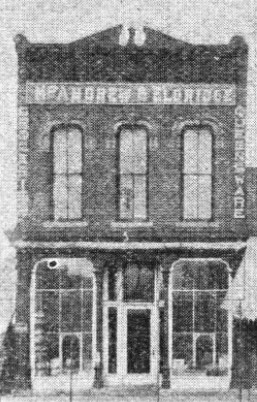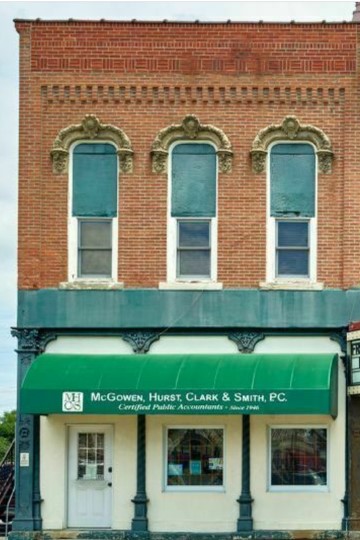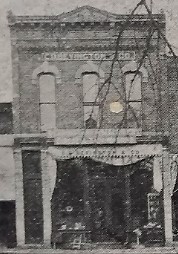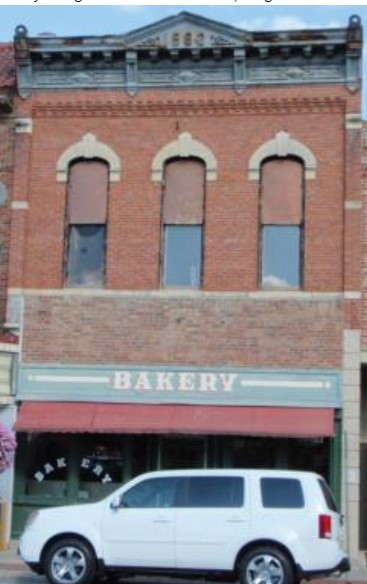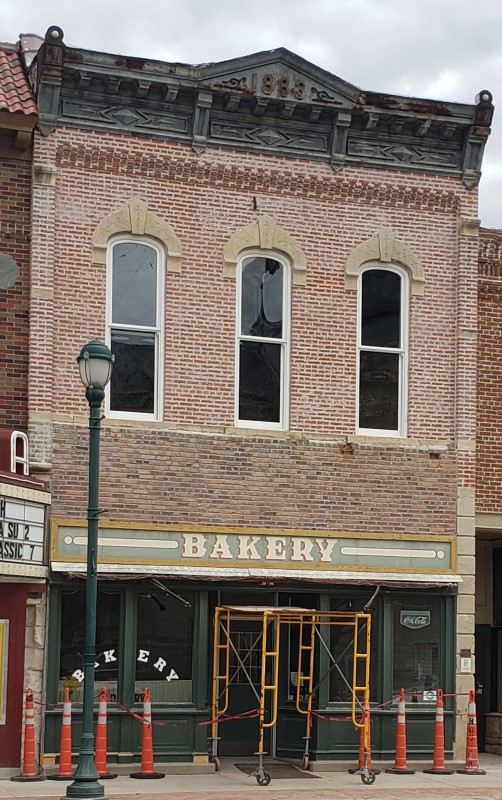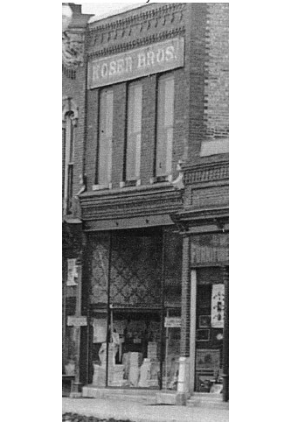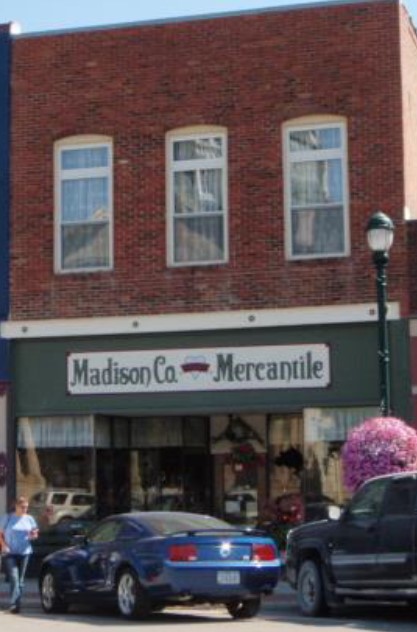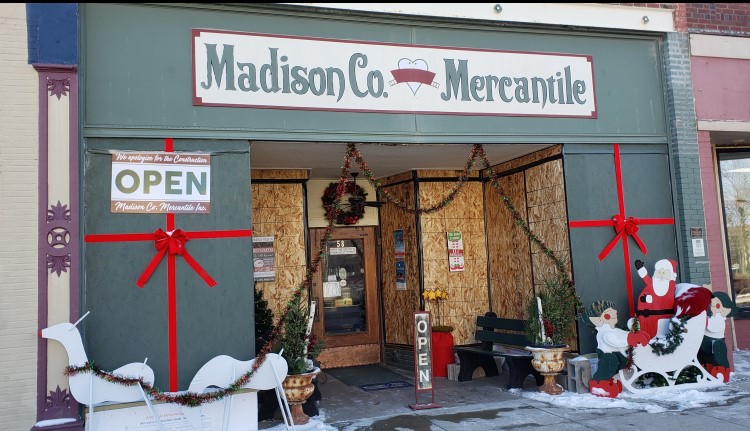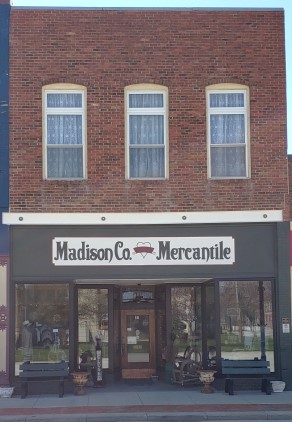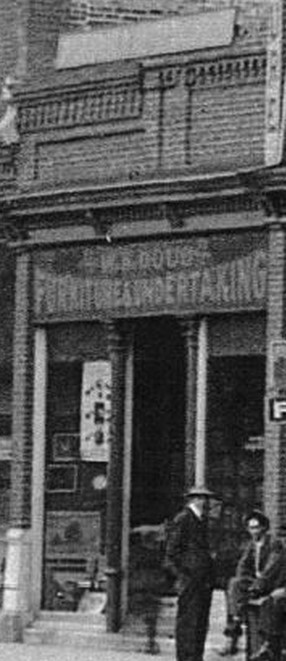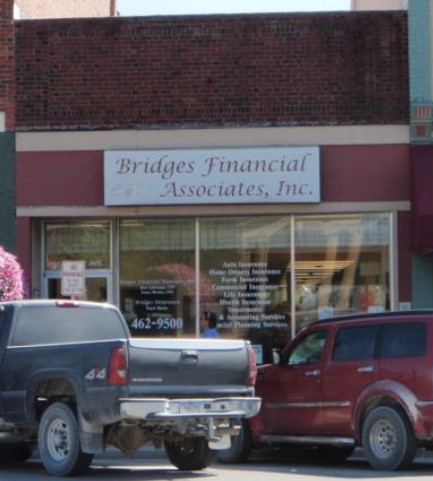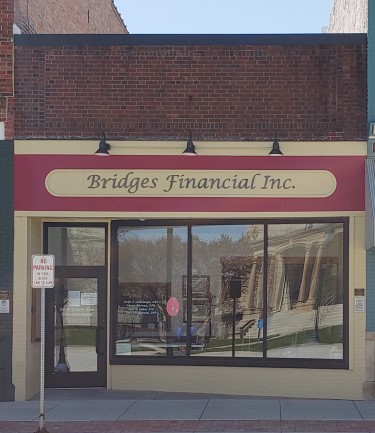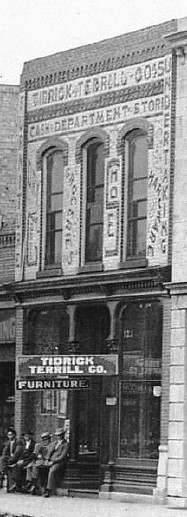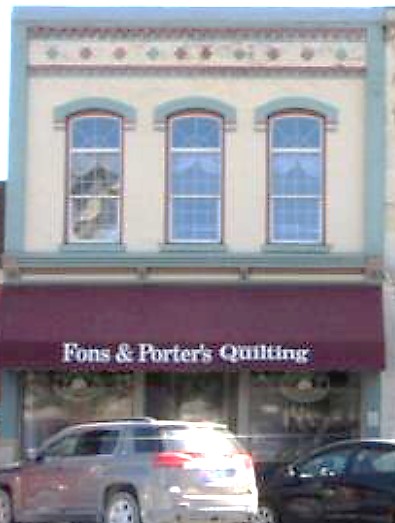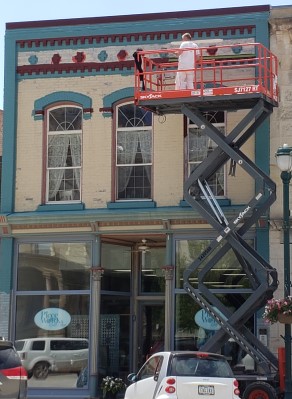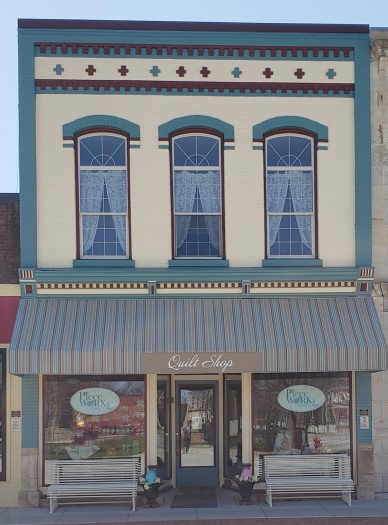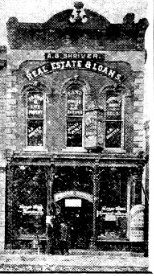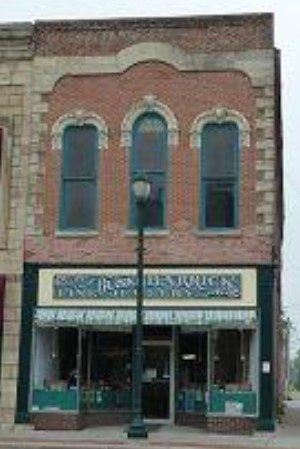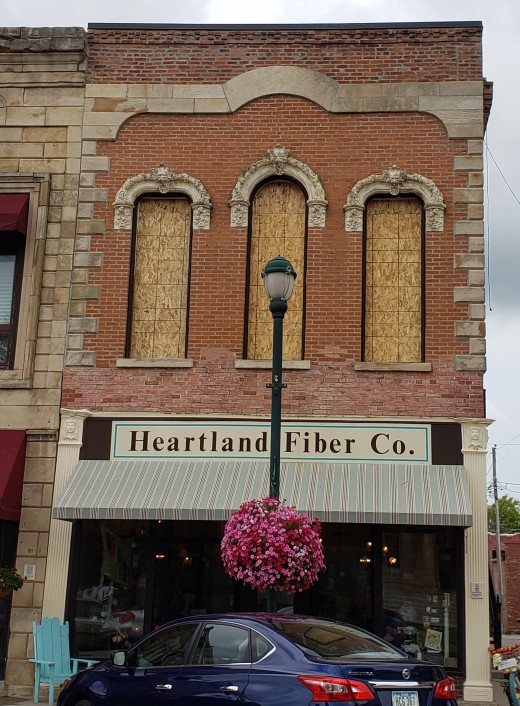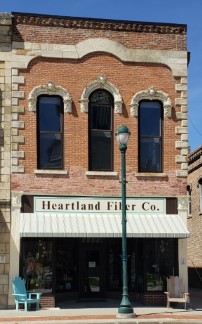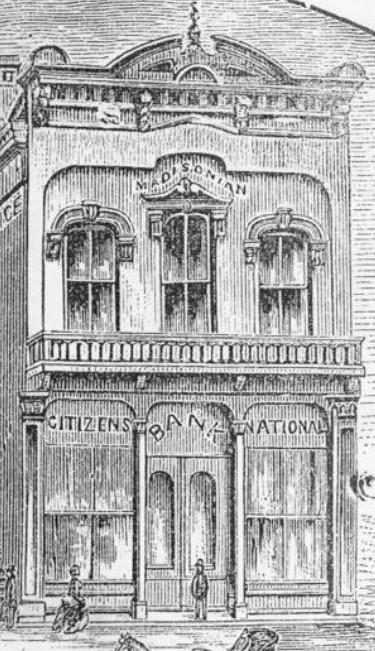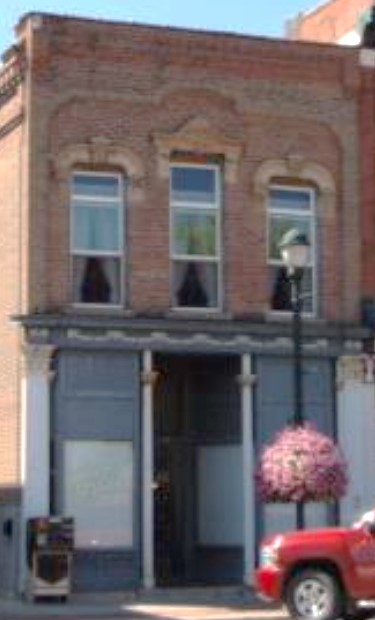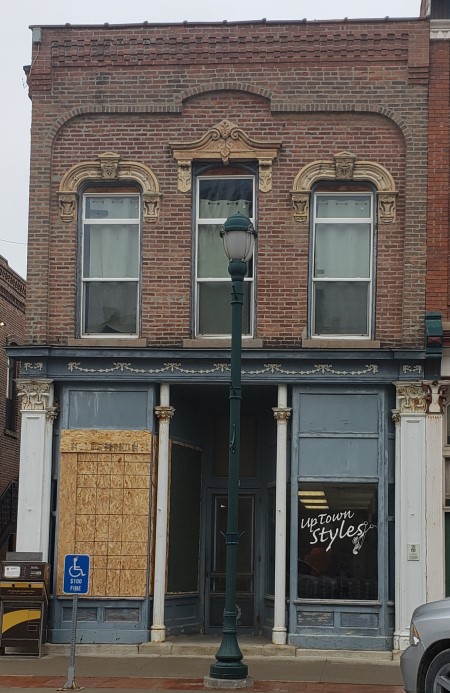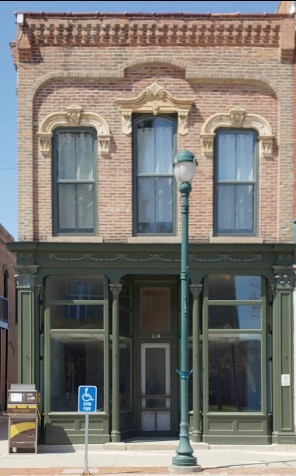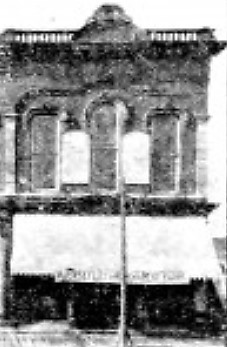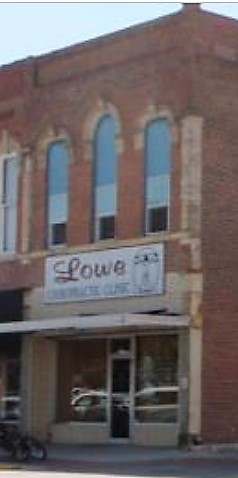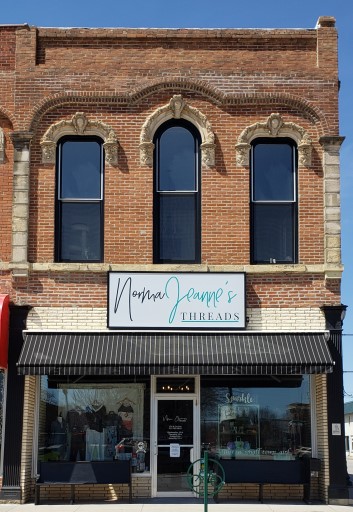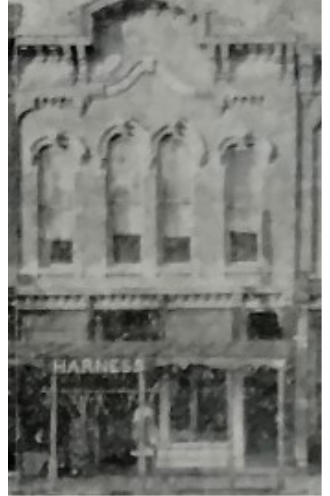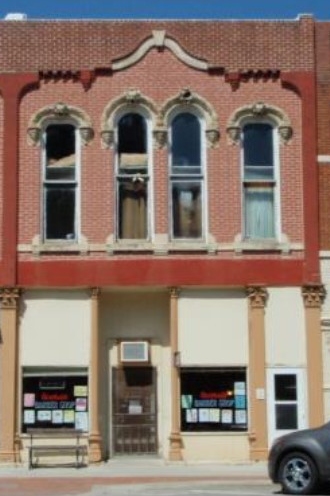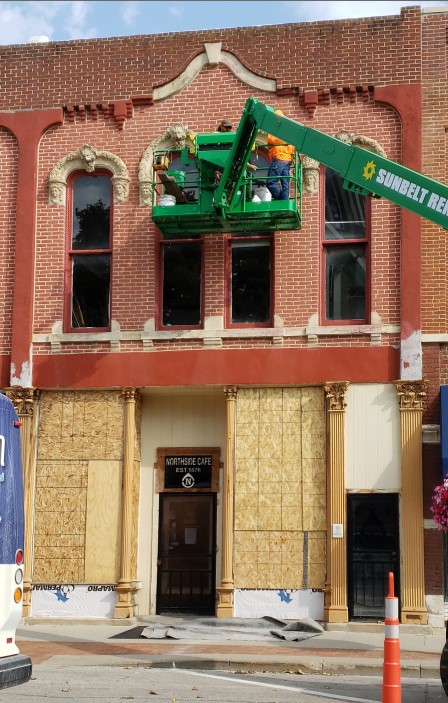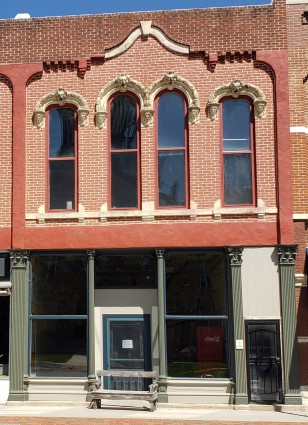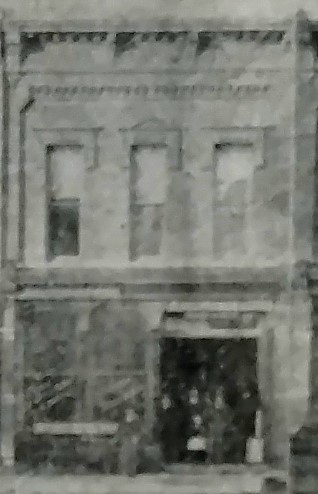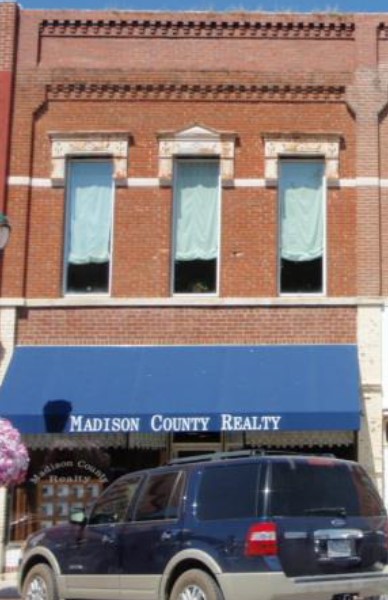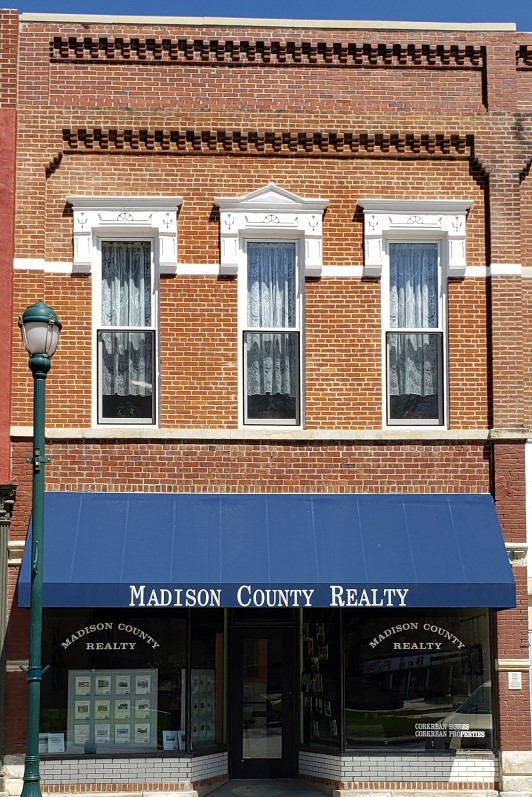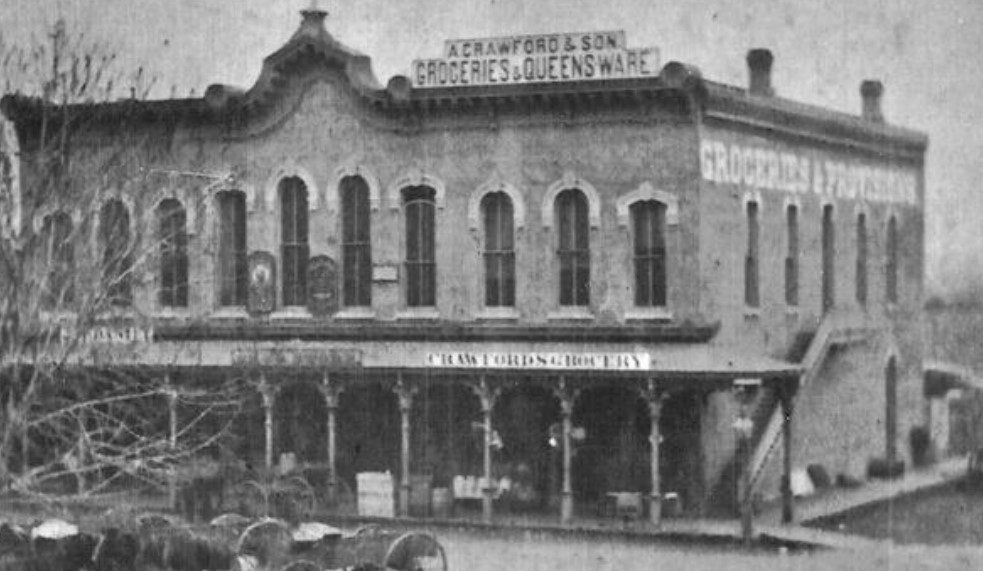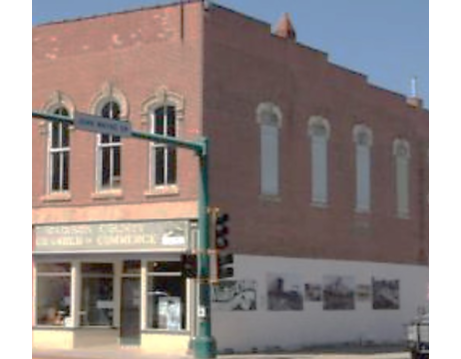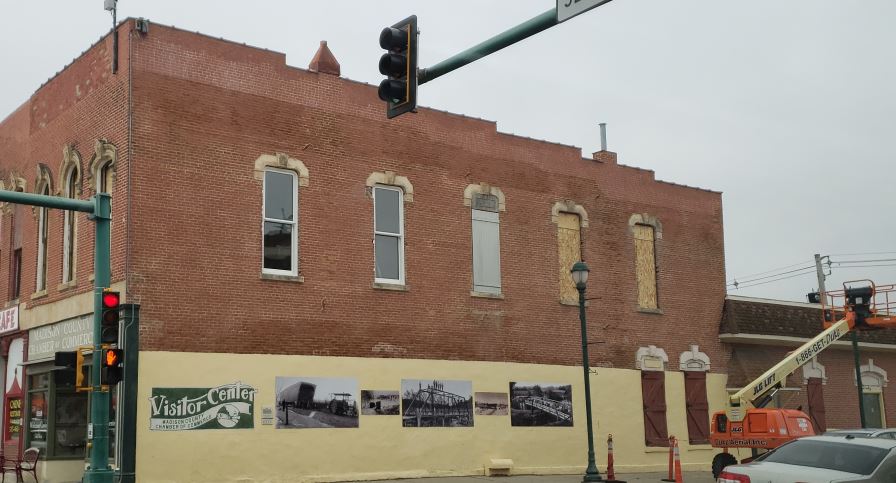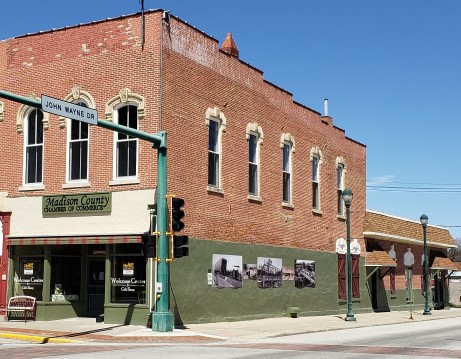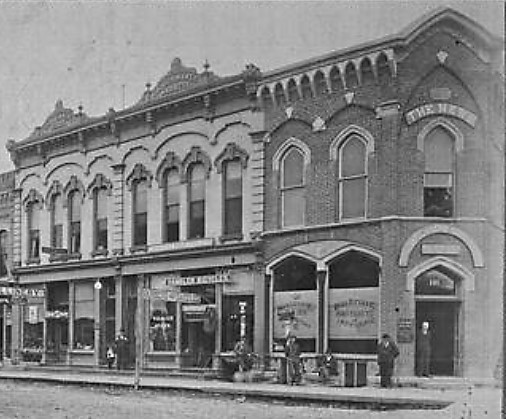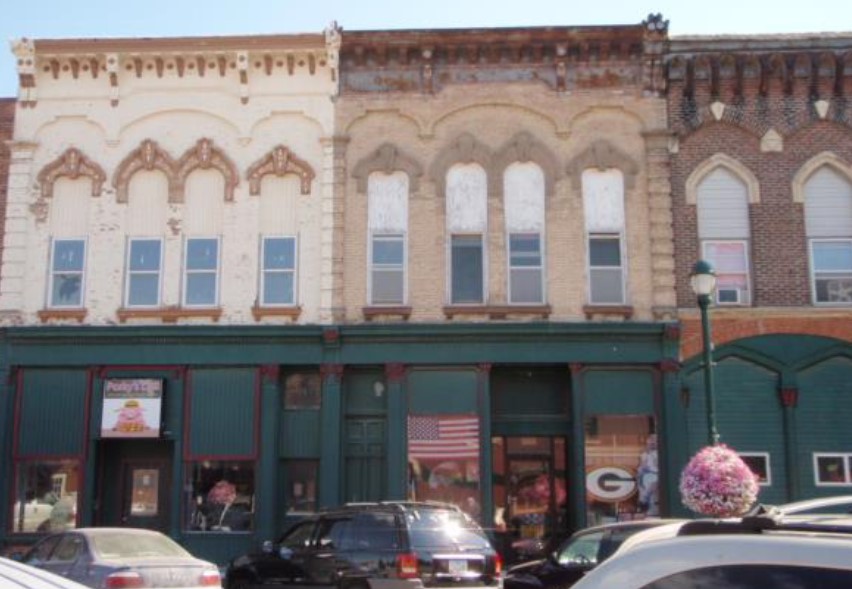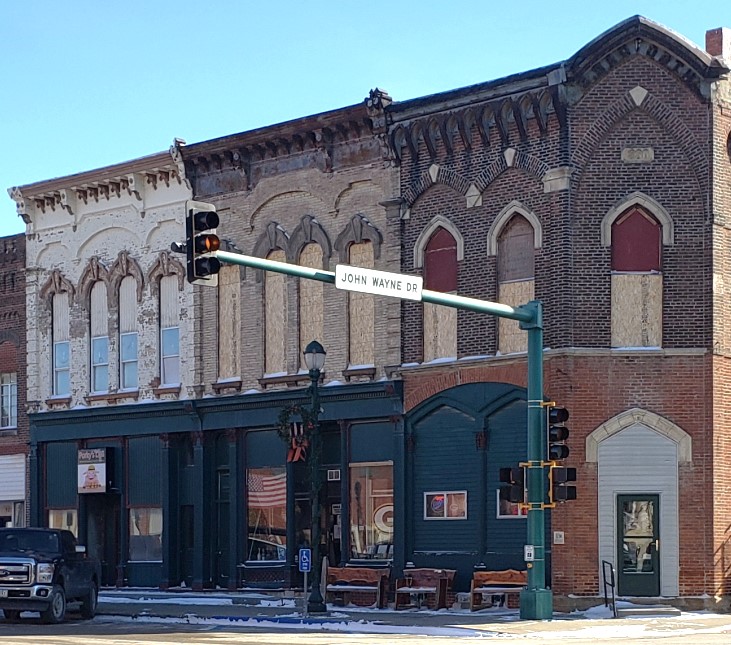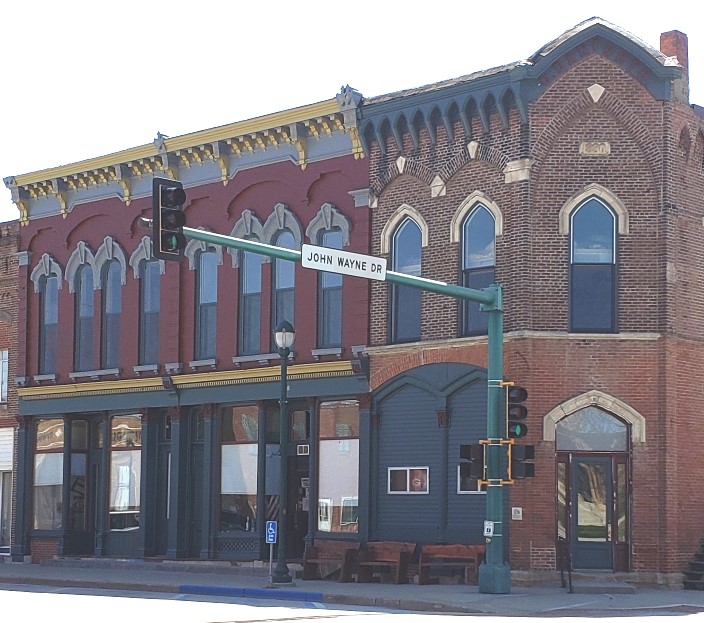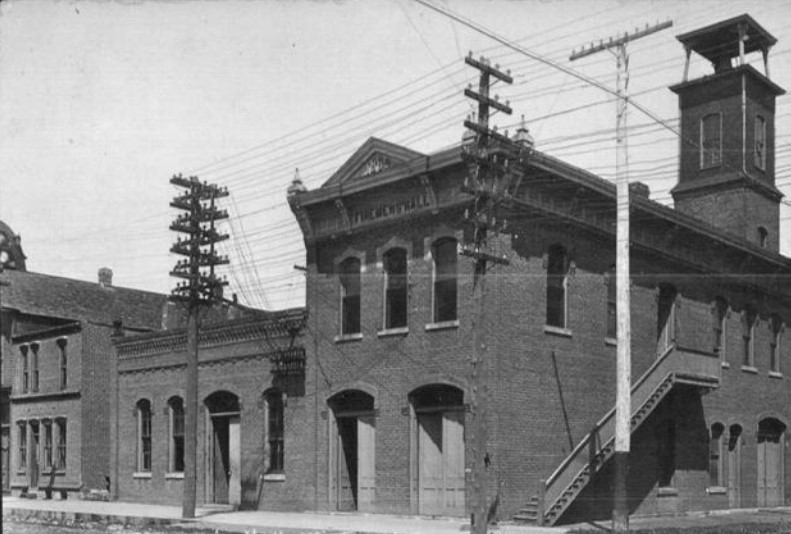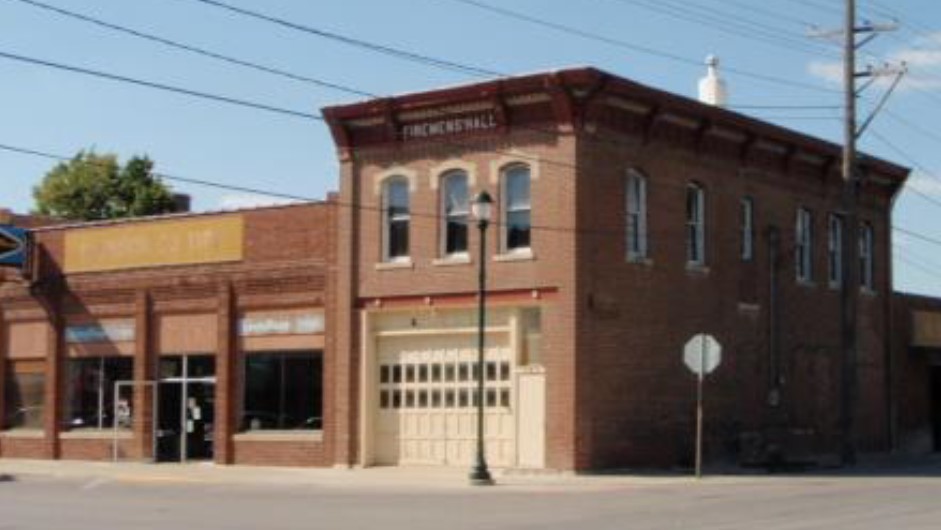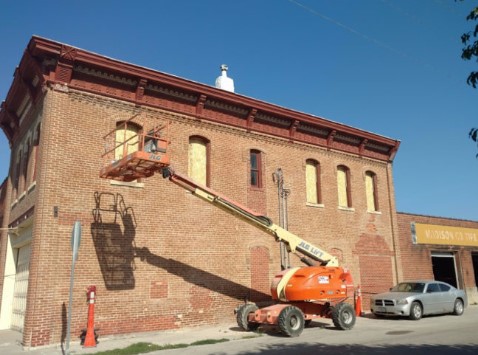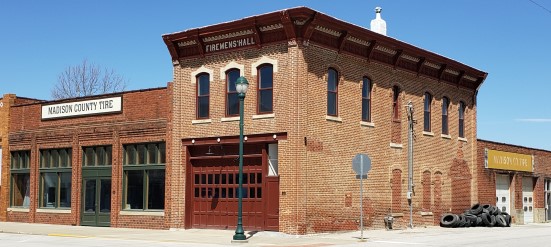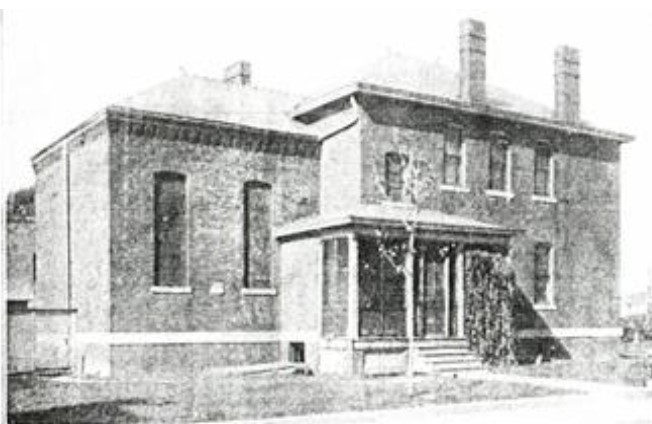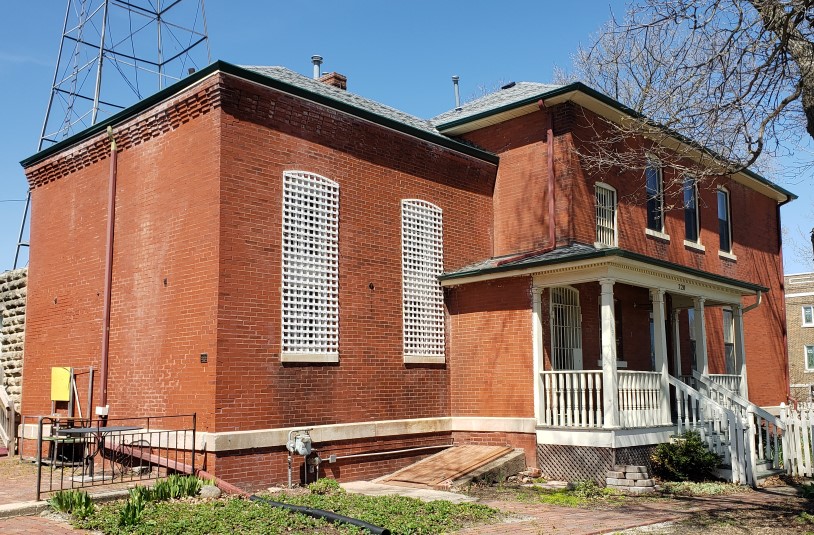
Winterset’s Courthouse Historic District Facade Rehabilitation Project was undertaken in 2018 with 15 property owners electing to enter the program. It is funded by the Iowa Economic Development Authority, the City of Winterset, and the individual property owners. The contractor was Cornerstone Construction of Corning, Iowa.
Participating buildings on each side of the square and others within the Courthouse Historic District have received some tough love, leaving them in an ugly duckling stage for quite some time. But a swan has since emerged at each location.
Here is a photo collage of each building showing a historic picture from long ago, plus a “before,” “during,” and “after” photo, if available. Many thanks to all the participants who made this possible for all of us to appreciate.
Click on the photos below to enlarge.
MCHS McGowen, Hurst, Clark, Smith CPA
Constructed in 1873, the two-story portion has held a variety of businesses including dry goods, grocery, restaurant, and seed store. Dr. Jesse Smith, who delivered Marion Morrison (aka John Wayne) in 1907, had her office on the second floor. In 1898, two one-story additions were built at the rear of the building – a flour warehouse was adjacent to the two-story building and an express (freight) office was housed to the east. Of the buildings participating in the Façade Project, this one had its entire storefront, except for the original iron pillars, removed and replaced.
The Bakery
This building “shouts from the rooftop” that it was built in 1883, as seen on the cornice above the second story. Several buildings around the square originally had such cornices, but only The Bakery retains this special look into Winterset’s history. The storefront has held a sequence of various occupants: a jewelry store, a restaurant, a hardware store, and a butcher shop. Later the storefront held a furniture store, followed by a Maytag distributor. For many years the Modern Woodmen Lodge occupied the second floor.
Madison County Mercantile
Originally, this was a one-story building, built in 1889 and funded by C.D. “Doc” Bevington, housed the Koser Bros. dry goods store. One of the first stores in Winterset to receive electricity in 1890, Koser’s held a nighttime event to show off what they termed as their “Crystal Frost.” A second story was added in 1901 to house the expanding Koser Bros. enterprise. For many years in the late 20th century, the women’s apparel store, Graves, occupied this building.
Bridges Financial
In the fall of 1880, Theodore Cox decided to tear down his old drug store and replace it with a new one-story brick building to house W.S. Doud’s furniture store. From the 1940s through the 1990s, this building was home to Jackson Electric and Breeding Hardware. he historic storefront was replaced in the early 1940s with its current “mid-century modern” style.
Piece Works Quilt Shop
This building was also originally built as a one-story building in 1880 with a second story added in 1895. It was first occupied by a grocery store that then expanded to a “department store” containing a variety of items and services: furniture/undertaking (a frequent combination), dry goods, and hardware. Breeding’s Hardware opened there in 1920 and remained in the building until 1998. In 2003, the building began its quilting era with Fons & Porter moving here.
Heartland Fiber
This brick building was built in 1874 with decorative corners, or quoins (pronounced “coins”), made from local quarried limestone. The new stairway in the alley to the north is reminiscent of the original stairway that ran the full length of the building with steps at each end. The building was built by White & Munger to sell the goods from their wool business, complete with a tailor on the second floor. It was a hardware store for decades, and many will remember the more recent Trask, then Bussenbarrick, jewelry store.
Rachel’s Uptown Styles
This is one of Winterset’s oldest brick buildings. Its construction was funded by Winterset’s Civil War colonel, H.J.B. Cummings, to house businesses he was involved in: the Citizen’s National Bank on the first floor and the Winterset Madisonian newspaper on the second. Eli Cox, covered bridge builder, was the contractor. The recessed entrance you see today is just as it was built in 1872. Since that time, this building has housed jewelry stores, a restaurant, tailor, organ/music store, millinery goods, a law office, and an abstract company.
Norma Jean’s Threads
This lot on the northwest corner of the square once held a frame post office. In 1875 a new two-story building was constructed facing the street with a stairway on the north side that gave access to second floor offices, including a photographer’s studio. A new one-story brick post office was attached to the west. The long tradition of a clothing store on the first floor began as early as 1886. The white brick front was modernized in the mid-20th century when it was the King’s clothing store.
Northside Cafe
Built in 1875 by Eli Cox, this three-bay building currently houses the Northside Café in the middle and east storefronts. Originally the second floor held small offices facing the square. The back portion was an opera house across all three buildings, that seated over 400 and included a balcony. Restaurants have occupied the two east bays since at least 1899. This is one of several buildings on the square that still retains its original iron columns on the storefront.
Madison County Realty
This building was designed for a farm implement dealer and that type of business remained there many years, followed by the Ruth Drug Store. In 1935, the Iowa Liquor Commission opened a State Liquor Store which remained at this spot until all such stores were closed on July 1, 1987. Sometime in the mid-20th Century, a new storefront was installed with glazed white brick meeting the street.
Madison County Chamber of Commerce
Andrew Crawford (1818~1879) was born in Ireland and made his way to Winterset in 1856. He commissioned a large, single building in 1873 that included not only the current Chamber office but also the two storefronts to the west. When you look at the second-floor windows of all three buildings, you can see that the windows form a graceful set with the taller ones in the middle. He created one of the pioneer groceries in Winterset and the one-story building to the north was his warehouse. A grocery occupied this space until at least 1926, then various other merchants have enjoyed this corner spot.
Pheasant Run
This two-unit building was built in 1876 by C.C. Schwaner and Dr. A.B. Smith, with unique brick and window detailing. In the west bay, Schwaner started a successful harness trade that was in business for 86 years. He also held 19 patents for his inventions to improve harnesses. The east bay held a variety of retail stores: millenary, drug store, bakery, and dry cleaning. The iron lattice work and deck near the sidewalk are original.
Madison County Tire
These two buildings were early City of Winterset municipal buildings. In 1888, the east building, with the misspelled Firemens’ Hall in the cornice, was built to house a fire engine on the first floor, which it did until 1977. Up a long flight of outside stairs on the east side, a citizen could climb to Winterset’s City Hall for the next 52 years, until 1940. The city built the west building in 1889 to house their first power plant to generate commercial electricity until a larger power plant was built 50 years later two blocks north of the Courthouse.
Former Madison County Jail
This brick building was built from 1901-1903 as a county jail at a cost of $11,000. It replaced the one under the west steps of the Madison County Courthouse that had been described as a “dungeon.” The south portion of the square structure, with iron-latticed windows, housed the jail cells and the north portion was the home of the jailer and his family. After a new jail was built in 1994, various retail businesses have made use of its unique features.
